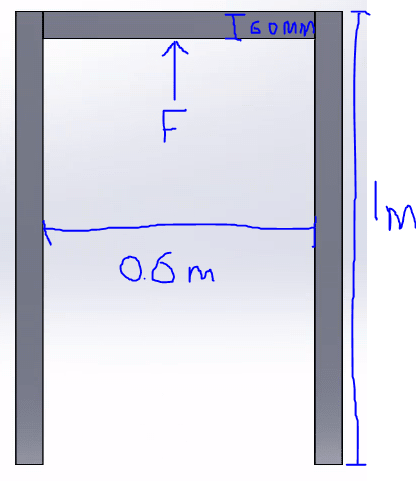You have to know the cross - section of each beam or column in order to calculate "I" moment of inertia , in order to plug it into the formula. Or in the case of the more exotic methods , computers will solve it based on the geometry of the cross section.
You must know how big the members are and what material they are made of in order to plug in "I" and "E" , the Youngs modulus.
I would go with Roark and Young , because their formulas were empirically tested by experimentation. If you want to use a computer, you could put the problem into an F.E.A engine , finite element analysis.
I would not use the distortion energy theorem, although that would be one way to get there. Keith
In my opinion using Castigliano , Deflection , Distortion Energy , Von-Mises is a little overkill … for this.
You would not use an atom bomb to kill an ant.
I think this one is a good exercise for paper and pencil


![[idea] [idea] [idea]](/data/assets/smilies/idea.gif)
